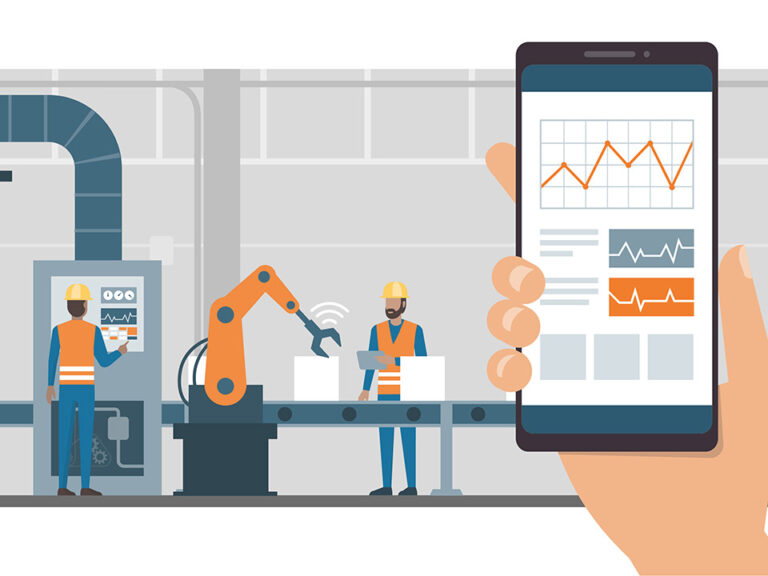The Transformative Power of Robotic Process Automation in Business Operations.
In the rapidly evolving digital landscape, businesses are continuously seeking innovative ways to streamline operations, enhance productivity, and maintain a competitive edge. Robotic Process Automation (RPA) has emerged as a transformative technology that enables businesses to automate repetitive tasks, optimize workflows, and drive significant benefits in terms of efficiency and cost savings. This article explores the power of RPA, its role in digital transformation, and how it empowers businesses to achieve higher productivity and better business outcomes.
Understanding Robotic Process Automation
Robotic Process Automation (RPA) refers to the use of software robots, or “bots,” to automate routine and repetitive tasks that were traditionally performed by humans. These tasks can range from data entry and invoice processing to more complex operations within supply chain management. By leveraging RPA, businesses can free up valuable time and resources, allowing employees to focus on more strategic activities.
Key Benefits of RPA:
- Increased Efficiency: RPA enhances efficiency by automating repetitive tasks, reducing the time and effort required to execute them manually.
- Minimized Errors: Automating processes with RPA significantly reduces human error, ensuring greater accuracy and consistency.
- Cost Savings: By optimizing workflows and reducing the need for manual intervention, RPA leads to substantial cost savings for businesses.
- Enhanced Productivity: RPA allows employees to focus on higher-value tasks, driving innovation and growth within the organization.
The Role of RPA in Digital Transformation
Digital Transformation involves integrating digital technologies into all areas of business operations, fundamentally changing how businesses operate and deliver value to customers. RPA plays a crucial role in this transformation by streamlining processes, enhancing operational efficiency, and enabling businesses to respond quickly to changing market demands.
RPA in Digital Transformation:
- Streamlining Operations: RPA automates complex business processes, reducing bottlenecks and ensuring seamless operations.
- Improving Customer Experience: By automating tasks such as customer service inquiries and order processing, RPA enhances customer satisfaction and loyalty.
- Driving Agility: RPA enables businesses to adapt to new challenges and opportunities quickly, maintaining competitiveness in a rapidly changing business environment.
- Optimizing Supply Chain Management: RPA optimizes supply chain processes by automating inventory management, order processing, and logistics, ensuring timely delivery of products and services.
Implementing RPA for Business Growth
RPA Solutions and Strategies: Successful implementation of RPA requires a strategic approach, tailored to the specific needs and goals of the organization. Here are some key steps to harness the full potential of RPA:
- Identify Suitable Processes for Automation: Begin by identifying routine and repetitive tasks that can be automated to improve efficiency and productivity.
- Leverage Automation Platforms: Use advanced RPA platforms to design, implement, and monitor automated workflows, ensuring they align with business objectives.
- Ensure a Smooth Automation Journey: Implement change management strategies to facilitate a smooth transition to automated processes, ensuring stakeholder buy-in and minimizing disruption.
- Measure and Optimize: Continuously monitor the performance of automated processes, making adjustments as needed to optimize efficiency and achieve desired business outcomes.
Case Study: Transforming Business Operations with RPA Imagine a scenario where a large organization integrates RPA into its operations. By automating data entry and invoice processing, the company reduces manual labor, minimizes errors, and frees up employees to focus on strategic initiatives. The result is increased operational efficiency, cost savings, and enhanced overall productivity.
The Future of RPA
The need for greater efficiency and competitiveness is driving the adoption of RPA as businesses continue to navigate the digital age. The future of RPA lies in its integration with other advanced technologies, such as artificial intelligence (AI) and machine learning (ML), to further enhance its capabilities and unlock new opportunities for innovation and growth.
Key Trends in RPA:
- Integration with AI and ML: Combining RPA with AI and ML will enable more intelligent and adaptive automation solutions, capable of handling complex and dynamic tasks.
- Expansion Across Industries: RPA is set to expand beyond traditional sectors, finding applications in healthcare, finance, manufacturing, and more.
- Focus on Continuous Improvement: Businesses will increasingly focus on continuous improvement, using RPA to drive ongoing process optimization and innovation.
Conclusion
Robotic Process Automation is revolutionizing the way businesses operate, offering significant benefits in terms of efficiency, productivity, and cost savings. By embracing RPA and integrating it into their digital transformation journey, businesses can streamline operations, enhance customer experience, and achieve sustainable growth. As the digital landscape continues to evolve, the power of RPA will play an increasingly critical role in driving innovation and competitive advantage.
FAQs
What is Robotic Process Automation (RPA)?
RPA is a technology that uses software robots to automate repetitive and routine tasks, enhancing efficiency and reducing human error. These software robots can mimic human interactions with digital systems, such as logging into applications, copying and pasting data, filling out forms, and more, without the need for human intervention. RPA can be applied to various industries and departments, such as finance, human resources, customer service, and supply chain management, to streamline processes and improve productivity. It can also integrate with existing systems and applications, providing a seamless automation solution. Overall, RPA enables organizations to optimize their operations, decrease costs, and free up employees to focus on more strategic and value-added tasks.
How does RPA contribute to digital transformation?
RPA streamlines business processes, improves customer experience, and enables businesses to adapt quickly to market changes, driving digital transformation. By automating repetitive and manual tasks, RPA allows employees to focus on higher-value work, such as analyzing data, making strategic decisions, and innovating. This not only increases productivity and efficiency but also reduces the likelihood of errors that can arise from manual data entry.
Furthermore, RPA can be integrated with other digital technologies, such as AI and machine learning, to create more sophisticated automation solutions. This enables businesses to leverage data better, improve decision-making, and deliver personalized experiences to customers.
Overall, RPA helps organizations become more agile, responsive, and competitive in today’s fast-paced digital economy. It drives operational excellence, accelerates innovation, and facilitates digital transformation by optimizing processes, enhancing customer interactions, and enabling businesses to scale and grow effectively.
What are the benefits of implementing RPA?
Benefits include increased efficiency, minimized errors, cost savings, enhanced productivity, and improved customer satisfaction. Additionally, RPA allows employees to focus on more strategic and high-value tasks, reduces the need for manual data entry and repetitive tasks, enables better decision-making through access to real-time data, and streamlines processes by automating workflows. It can also help businesses meet regulatory requirements and compliance standards, as well as adapt to changing market conditions quickly. Overall, implementing RPA can lead to a competitive advantage for organizations by transforming business operations and driving innovation.
How can businesses successfully implement RPA?
Businesses can implement RPA by identifying suitable processes for automation, leveraging advanced RPA platforms, ensuring a smooth transition, and continuously monitoring and optimizing automated workflows.






